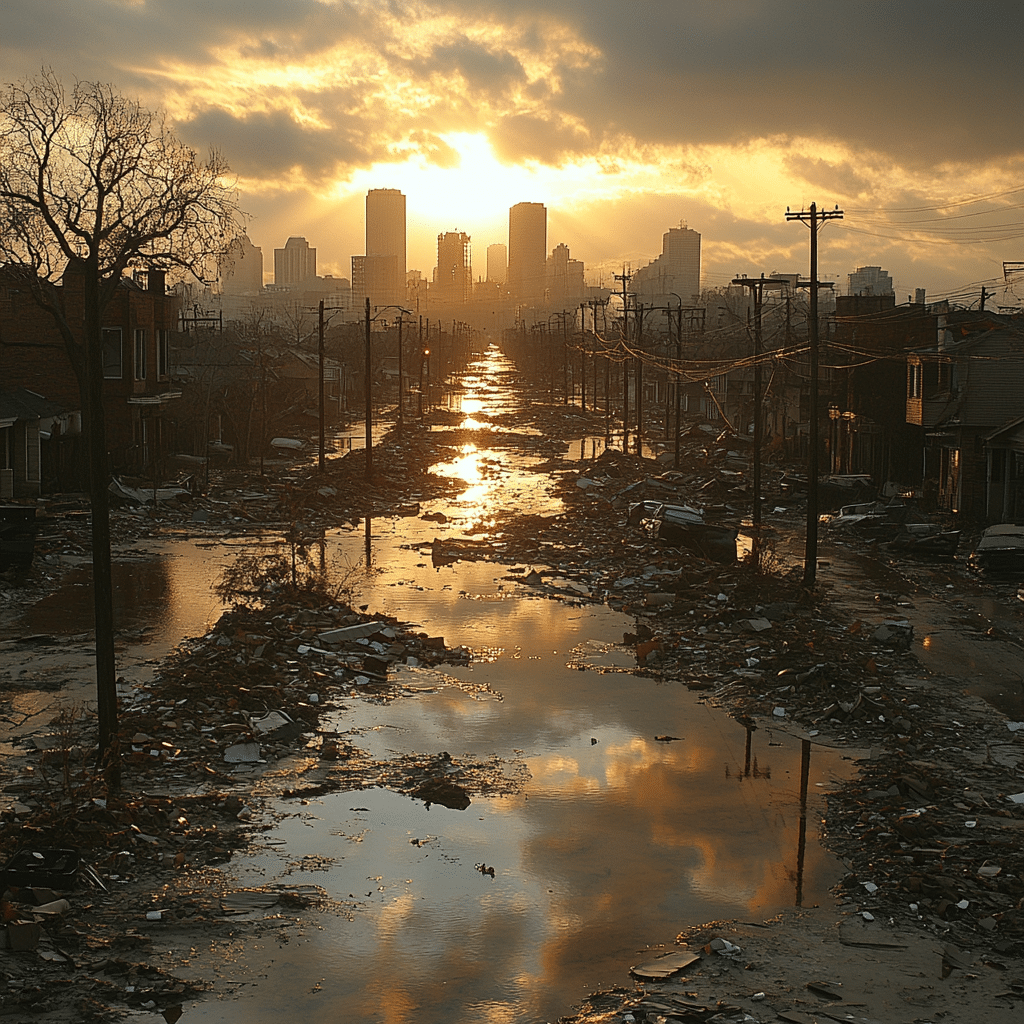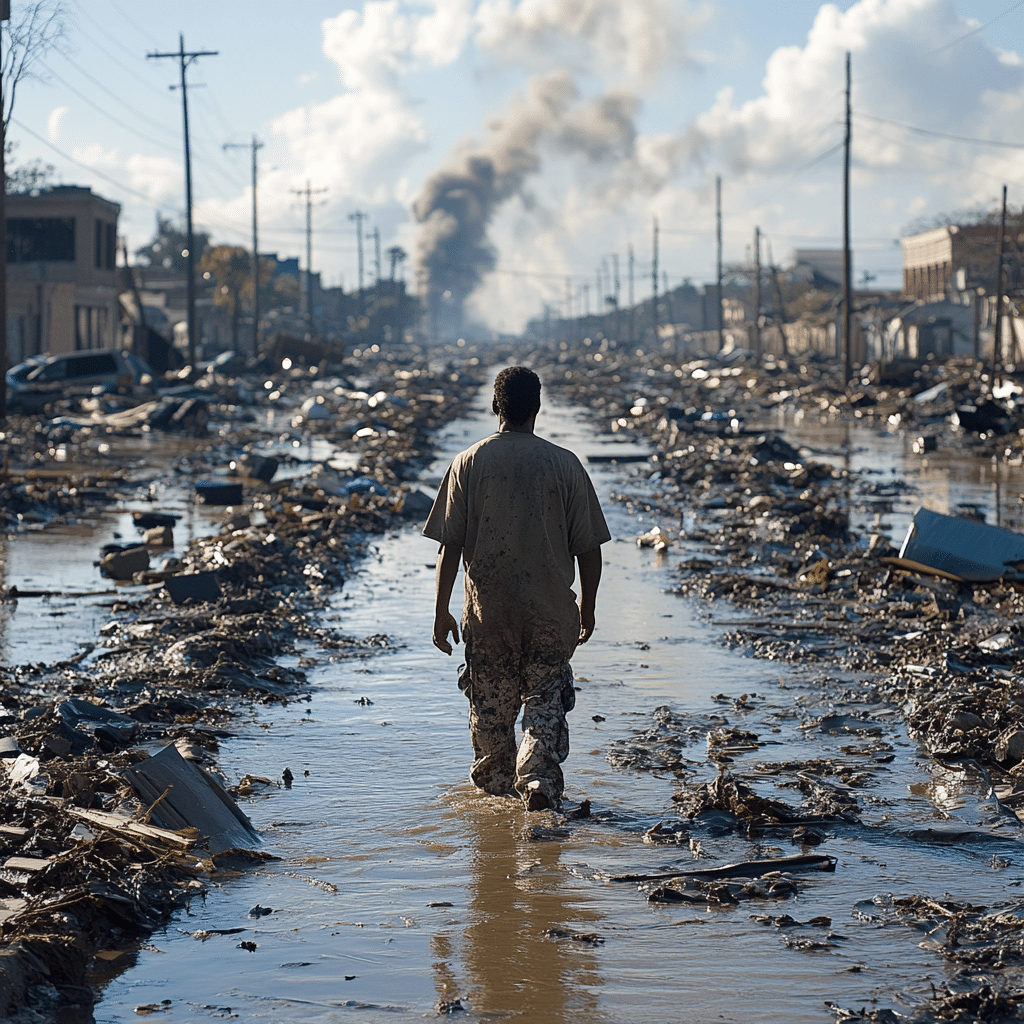Hurricane Katrina struck the Gulf Coast of the United States in August 2005, leaving a haunting legacy that has shaped how we understand natural disasters. The hurricane katrina death toll stands as a stark reminder of the devastation that can occur when nature unleashes its full fury. This disaster not only brought extensive damage to homes and infrastructure but also inflicted profound human tragedy. As a nation, we grapple with the urgency of better emergency management strategies to safeguard vulnerable populations and prevent future calamities.

Top 7 Shocking Facts About the Hurricane Katrina Death Toll
The government’s official death toll from Hurricane Katrina sits at approximately 1,836 people. Yet, independent organizations and local investigators question this figure, suggesting that the actual number could be as high as 2,500 deaths. This staggering difference illustrates the challenges faced in accurately assessing the impacts of such colossal disasters, as many fatalities may remain undocumented in the chaos.
Delving deeper into the hurricane katrina death toll, we find disheartening demographic patterns. A substantial number of victims belonged to vulnerable groups, primarily the elderly and low-income individuals. In fact, about 70% of those who lost their lives during the storm were over the age of 60, highlighting the inadequacies in resources allocated for these high-risk populations during emergency evacuations.
The fallout from Hurricane Katrina was not limited to immediate loss of life. Survivors faced long-lasting health issues stemming from exposure to contaminated water and stress-related illnesses. Emerging studies reveal a troubling upswing in post-traumatic stress disorder (PTSD) and depression among displaced populations, which continues to unravel the fabric of affected communities even today.
To fully appreciate the hurricane katrina death toll, it’s insightful to compare it with other devastating hurricanes, such as Hurricane Maria in Puerto Rico, which resulted in around 3,000 fatalities in 2017. The varying death tolls underscore how local infrastructure and response capacities can dramatically influence outcomes during natural disasters. This comparison prompts vital conversations on preparedness and response capabilities across regions.
The response to Hurricane Katrina, particularly from the Federal Emergency Management Agency (FEMA), has faced extensive criticism over the years. Numerous studies point to slow response times and insufficient resources as contributing factors to the high casualty rates. The lessons learned from this disaster spurred important reforms in emergency management protocols that other cities now strive to implement effectively.
New Orleans, bearing the brunt of Hurricane Katrina’s fury, experienced a mass exodus, with approximately 80% of its population evacuating. Many others remained trapped, leading to a significant demographic shift in the city. As of 2021, New Orleans’ population still had not returned to pre-Katrina levels, complicating ongoing debates about gentrification and the broader revitalization process.
The tragedy of Hurricane Katrina served as a wake-up call for the nation regarding hurricane preparedness and response strategies. In the aftermath, cities like Miami and Houston began investing heavily in disaster readiness initiatives and infrastructure improvements. Comprehensive public education campaigns on evacuation processes and disaster planning have become standard practice in many communities.

The Global Context: Cancun Hurricane Helene
While Hurricane Katrina remains a significant chapter in U.S. history, international events like Cancun Hurricane Helene (2000) provide opportunities for comparison regarding global responses to hurricanes. Helene influenced how Caribbean nations approached hurricane preparedness and response, reinforcing the idea that local government resources profoundly shape death tolls during such calamities. The emergency management lessons learned from Hurricane Katrina resonate beyond American borders, reminding us that preparedness saves lives in any disaster.
Innovative Wrap-up
In conclusion, Hurricane Katrina stands as a pivotal case study illustrating the deep impacts natural disasters can have on human lives and societal structures. The hurricane katrina death toll, along with its intricate aftermath, has ignited vital discussions around improving infrastructure, refining emergency response tactics, and addressing social inequities. Acknowledging these shocking facts not only honors those who perished but also fuels our commitment to thwarting similar tragedies in the future. As communities continue to adapt and enhance their preparedness strategies, the lessons of Katrina will remain crucial for resilience against nature’s ferocious onslaughts.
Hurricane Katrina Death Toll: Shocking Facts and Figures
Hurricane Katrina, one of the most devastating storms in U.S. history, left in its wake a staggering death toll that still resonates today. The official numbers suggest over 1,800 lives were lost, but some estimates hint at even graver totals. Beyond the heartbreaking figures, communities faced overwhelming challenges as they scrambled to recover. In particular, areas surrounding Alcorn State were hit hard, showcasing the resilience of individuals striving to rebuild their lives post-disaster. The aftermath of such calamities truly highlights the vital importance of preparedness, much like how regular updates on the latest on Idaho Murders can keep communities informed and vigilant.
Did you know that Hurricane Katrina’s impact can ripple through sectors beyond just immediate relief? Mental health resources like Harvard Gardens rehab started gaining attention as survivors battled long-term psychological burdens in the wake of destruction. It’s intriguing how a natural disaster can shine a light on various areas of need, from healthcare to housing. Just imagine how many people have been affected, not only physically but emotionally, and the efforts involving these communities’ resilience play in the support systems being built up over time.
Another interesting nugget revolves around the timing of the storm. Hurricane Katrina struck in late August, a season when many seek an escape to sunny destinations. For instance, if someone were planning their getaway right after that time, they’d want to consider when’s the best time To go To Thailand. But in those tumultuous days, thousands faced evacuations, frantic measures, and sleepless nights, a far cry from sunbathing on a beach. It’s essential to appreciate the tenacity of people who endure such hardships and to acknowledge that the painful memories of that catastrophic event continue to shape policies and awareness surrounding natural disasters today.
As such disasters recede into memory, remembrances like St. Nicholas Day remind us of the joy of giving and community spirit that thrives despite tragedy. The narrative surrounding the hurricane katrina death toll encapsulates not just loss, but also a profound unity and determination among people to help one another. As they roll up their sleeves and tackle the grueling task of rebuilding, communities echo the resilience that often shines bright in the darkest times. So, while the hurricane katrina death toll paints a heavy picture, it also sparks discussions about human spirit and collective support in the long aftermath of crisis.




